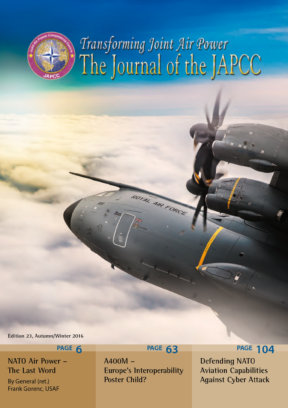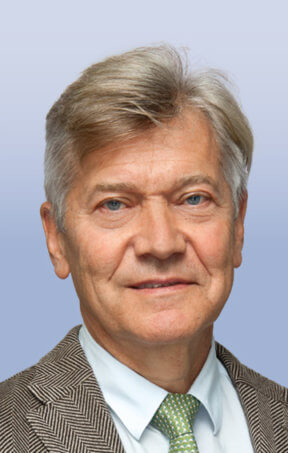Introduction
Optical fibres move tens of terabits of data every second between cities and across oceans. But for the majority of Earth’s surface, where running fibre is impractical physically or financially, communication satellites in space provide connectivity to remote ground users and also to mobile platforms such as aircraft, ships, and even other satellites. These links traditionally rely on Radio-Frequency (RF) communications, which while reliable, are orders of magnitude slower in moving data than optical fibre links, and have issues related to antenna footprint, power requirements, and limited available spectrum. The potential for the laser to overcome these issues in space was realized soon after its invention.1
Laser Communication (LaserCom) means communicating with laser beams in near-infrared frequency spectrum (214–400 THz), which allows a user to send a stream of data several hundred times faster while using much less power than today’s fastest, strongest radio signals. Such wireless, free-space, optical communication is an emerging practical technology that has been conceptually mature for a long time. In recent years, significant progress was achieved in this field in Europe and especially in Germany. LaserCom has a high priority in the German National Space Program resulting in a well-funded research and development program, supported by the German Space Agency (DLR) and focused on application-mature laser terminals for wideband communications in space.2 Recent LaserCom research yielded the technical measures necessary to mitigate the susceptibility of laser beams to atmospheric disturbances. This presents the unprecedented opportunity to apply optical communication in and between both outer space and airspace.
A current near-term goal of the German Air Force is the validation of air-to-air as well as air-to-ground LaserCom connections with live experimental verification towards an initial operating capability. This project puts special emphasis on wideband optical data links for the transmission of large-volume Intelligence, Surveillance, and Reconnaissance (ISR) sensor data from aerial platforms, which formerly was realized only via Satellite Communication (SatCom) relays. With Remotely Piloted Aircraft (RPA) being fielded in ever-increasing numbers, and the advance of highly capable ISR sensors placing large data transfer demands on communication systems, such an approach has major significance for the future of military capabilities.
LaserCom Achievements in Space
Although the first LaserCom systems were demonstrated in space in the 1990s, it is only recently that the technology, reliability, and economics of photonic components have reached levels that, combined with the need for more bandwidth, have allowed these systems to be pushed more broadly into operation. The current standard is Tesat Spacecom’s Laser Communication Terminal (LCT), which has operated in low earth orbit (LEO) aboard US NFIRE and German TerraSAR-X satellites since 2007.3 LCT payloads are also embarked on European satellites in geosynchronous earth orbit (GEO) on the Alphasat (Inmarsat-4 F4) since November 2013, and the Eutelsat 9B since January 2016. While the Alphasat LCT is a technology demonstration payload for optical wideband communication LEO to GEO, the Eutelsat 9B (alias EDRS-A) hosts an LCT as data relay payload for the European Data Relay Satellite System (EDRS). Data being collected by LEO satellites will be sent via optical links (laser) to EDRS nodes which will then transmit the data in near real-time via Ka radio band (26.5 – 40 GHz) at 1.8 gigabit per second (Gbps) to Earth.
Quest for Air-to-Air and Air-to-Ground LaserCom
While the aforementioned LCTs provide a well-proven technology for optical wideband communication, it must not be overlooked that they are exclusively designed for use in space, i.e. for transmission between assets deployed above the atmosphere. To date, beyond the line-of-sight (BLOS) communication of aircraft with each other or their ground stations continues to rely on SatCom, i.e. the use of RF links in the Ku band (12–18 GHz).
Although more than 200 deployed satellites practically provide global Ku band coverage, the overall congestion of the Ku band causes problems in particular with regard to unmanned aircraft operation. As a matter of priority, for reasons of air traffic safety, available RF bandwidth must be primarily reserved for Command and Non-Payload Communications (CNPC) i.e. the exchange of flight mission control signals. Parallel and timely transmission of voluminous ISR sensor data is often not possible within the limited Ku frequency range that the responsible authorities – such as the European Air Safety Agency (EASA), the International Telecommunication Union Radiocommunication Sector (ITU-R), and the International Civil Aviation Organization (ICAO) – could usually make available for such operations.
Apart from bandwidth limitations, a second concern is information security of ISR data, since radio transmission uses a segment of the electromagnetic spectrum that is vulnerable to both eavesdropping and jamming. This is not the case with optical communication, which is extremely difficult to intercept or disrupt.
Furthermore, in times of austerity the question arises whether there are more cost-effective ways than the use of expensive satellite communication. For these reasons the military has a definite requirement for wideband communications not only between spacecraft but also for the interconnection of air assets in a LaserCom network. Wideband optical communication, which links directly air-to-air (A2A) between flying platforms, and air-to-ground (A2G), could be the answer. A potential concept is shown in Figure 1.
Compact Micro Laser Terminal for Aircraft
A2A / A2G LaserCom presumes the existence of aeronautical laser terminals, which have recently been developed. Micro Laser Terminals (MLT) for stratospheric research and aeronautical applications, as well as the corresponding optical ground station, are the result of many years of dedicated research conducted by a German industry partner. 4
The MLT hardware family is comprised of miniaturized optical terminals for the application on a wide range of aeronautical platforms from Medium or High Altitude Long Endurance (MALE/HALE) RPA to stratospheric balloons. The main focus in developing the series was a compact system based on an innovative pointing mechanism, low power consumption and efficient heat dissipation. The terminals are optimized for the dynamic behaviour of agile flight platforms with a high degree of vibrations. In November 2013, an MLT model was successfully tested on a jet aircraft Tornado (see Figure 2). The near-real time transmission of a video stream from a forward facing high-resolution camera on a data link from the aircraft to an optical ground station at 1 Gbps was demonstrated. The maximum link distance was 60 km at an altitude of 7 km and a speed of 800 km/h. This was an extreme test case, as the Tornado is a very rough platform with fast manoeuvres and a high level of vibrations, which were effectively compensated by the MLT’s stabilization system. More valuable experience has meanwhile been gained which led to the upgraded model MLT-70. For more technical details see Figure 3.
The current technological development of the MLT product family offers further significant advantages, which predestine MLT devices for A2A applications in the atmosphere, especially for Medium or High Altitude Long Endurance (MALE/HALE) RPA.
Link error correction. MLT devices are equipped with coding transceivers that provide an effective link error correction to mitigate signal fading effects and the risk of data loss caused by atmospheric turbulence in case of long-distance optical communication. Specific Forward Error Correction (FEC) is realized by the so called Laser Aerial Data Interface (LADI) to compensate such scintillation effects.
Eye-safe laser. MLT laser diodes are operated at 1545–1560 nm wavelengths, i.e. within the eye-safe range even at high-power levels. This wideband communication can be deployed inside controlled airspace without inflicting any risk to civil aviation.
Separate bands for CNPC and sensor payload link. Interferences and competition for bandwidth between the CNPC and the payload link, which are typical for radio multi-antenna systems, are excluded. While CNPC would traditionally run as required via RF, ISR data transmission occurs in the optical frequency range and is therefore completely separated. Furthermore, the optical link is not subject to ITU-R coordination. This is extremely beneficial for both reliable aircraft control and flawless payload data transmission. Furthermore, this could become a key factor for RPA certification and their lawful integration into non-segregated airspace.
Payload Interoperability. The MLT optical transfer of collected ISR data to any destination, such as ground stations or other airborne as well as space-based optical communication payloads is technically possible. This is ensured by the Ethernet 10 GBASE-SR data interface, which is international standard that allows for interoperable digital data exchange.
Payload Commonality. The MLT is not designed for a specific aircraft model, instead consisting of standardized mechanical and electrical interfaces that can be accommodated on any aerial platform (manned or unmanned), stratospheric balloons or satellites. See Figures 4 to 6.
Multi-hopping. Multi-Hop Free-Space Optical Communication would allow relayed, BLOS data transfer through a chain of airborne optical links, e.g. several RPA fitted with MLTs and operating at suitable distances.
Space Qualified. The new MLT-70 is compatible to many platforms as well as technically qualified for operation in space, which means it could be deployed on LEO spacecraft as well as GEO relay satellites. This would even provide a BLOS LaserCom capability for manned and unmanned aerial platforms.
Conclusion and Way Ahead
While LaserCom in space is already mature and applied, the opportunity to provide wideband BLOS communication in the air, reliably, securely, and without the expense required to gain access to a Satcom GEO-relay capacity, makes the MLT technology most interesting for future airpower capabilities. Recent technological advances in that regard are most promising as has been underlined by numerous positive test results specifically about laser-based air-to-ground communication links.
However, never before have laser links A2A been verified under practical flight conditions. That should change now, since the German National Armament Director (i.e. the Director-General for Equipment, Information Technology and In-Service Support of the German Ministry of Defence), who is responsible for the planning, management and supervision of all national and international armaments activities in view of the tasks of the Bundeswehr, intends to conduct a research program in near future that has been proposed specifically for the verification of A2A laser links. The program aims at both testing LaserCom equipment on board flight platforms under practical conditions and gaining clues needed for the development of future operational concepts.
The research program will be performed with support by German industry to achieve synergies and efficient solutions. The objective is to gain an initial operating capability with special attention to the interconnection and interoperability of LaserCom systems. Results may become important for the development of a future European MALE RPA, for which Germany has assumed the lead role according to the German Air Power Development Strategy 2016.6 Overall, the innovative potential of this new A2A LaserCom technology still tends to be underestimated. NATO or EU nations should therefore begin actively supporting research and development of such applications in order to achieve multinational air power solutions for the benefit the Alliance.













